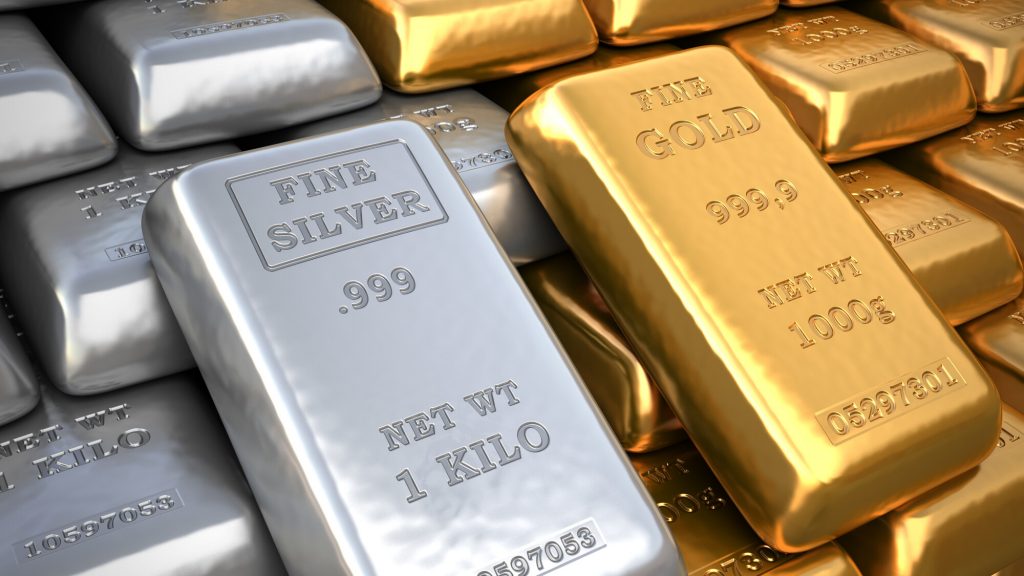What’s all the fuss about investors turning to precious metals like gold and silver? We’re not talking about stocks, bonds, or cryptocurrency here. Are you interested in discovering the differences in gold vs silver and how these investments can turn into a lucrative financial move for you and your loved ones?
Read on to learn the advantages and disadvantages of investing in precious metals today and how to choose between a gold or silver investment account.
What is Gold?
First of all, what is gold? When we say “gold,” we mean any metal in the golden family: gold, platinum, palladium, rhodium, etc. Gold is commonly found as jewelry, as a means of payment, and as a symbol of wealth. It’s a soft, shiny yellow metal that has a precious metal, or bullion, market.
Gold can be easily converted into and out of other materials, including silver, platinum, and palladium, which makes it a versatile metal. On top of this, gold is the most well-known of all precious metals, especially among investors, but it’s not the only option available to you.
What is Silver?
Is silver some sort of supplement or substitute for gold? No. Silver is a precious metal that is comprised of 95% or more of an important group of minerals known as the silver group.
The silver group has a mix of metals in its structure. Some, like silver, consist of all metals. Other metals consist of a mix of all metals. Still others of the group are entirely made up of only one type of metal. This mix of different metals is what makes silver such a precious commodity.
Gold is a precious metal that has an incredibly wide range of industrial and precious uses. It is also used as jewelry and as a currency for exchange purposes, but these uses don’t require the physical presence of the metal.
Gold is gold no matter where it is or who possesses it. Silver is different, which makes it more appealing to some investors.
Investing in Gold Vs Silver
First, let’s clear up a few myths around the distinction between gold and silver.
Gold is a precious metal; a finite resource, though it’s mined extensively. Most people associate gold with wealth or financial security, and in some instances, they’re right. This is why you’ll see gold investments going by the name of gold exchange-traded funds (ETFs), or gold mutual funds, both of which are held in your traditional brokerage account.
Silver, on the other hand, is a non-precious metal; it doesn’t have a specific purpose in the world except to be used for certain types of silverware and jewelry. Even so, this is the type of metal that’s getting all the attention from investors lately.
The same can’t be said for investments like stocks and bonds, because although you might be able to sell your shares for a profit, you could end up losing money. This often happens if there’s a sudden change in market conditions or you miss out on a dramatic rise in the value of your investments.
In fact, some history has even shown that even with time, gold and silver investments vary quite widely from traditional investments like stocks and bonds.
Why Invest in Gold or Silver?
The most compelling reason to invest in gold and silver is that they offer incredible returns. In fact, many investors cite that the two metals offer far superior returns compared to many other investments.
Many investors understand the value of the U.S. dollar but, like a lot of people who invest, they often fall into the common misconception that they don’t understand the value of owning precious metals.
You see, you don’t have to go out and buy big quantities of gold or silver to reap the benefits. You can invest in smaller quantities to get your feet wet or, as is more common, you can invest in individual pieces of gold or silver.
The Risks of Precious Metal Investments
If you’re planning to invest in precious metals, you want to be aware of the risks involved in the process. The biggest one is the volatile nature of the metal itself. If the stock market suffers a major dip, and gold and silver prices plummet, you could see your investment going up in smoke.
That’s because gold and silver prices have historically moved in line with the general economy. If the economy is on the rise, so is the price of gold and silver.
The next issue you should consider is the amount of storage you need for your gold and silver. Since both gold and silver are highly portable and difficult to lose, if you store them in a secure place, the value of your investment should be relatively stable.
Arranging your storage options before investing is a great way to avoid potential pitfalls.
The Appeals of Precious Metal Investments
Someday, history is going to become part of our personal finance lessons. History tells us that investment choices come and go, but the fundamentals that make them valuable should stay with us forever.
Gold and silver provide investors with two liquid alternative investments that can yield much higher returns than even the most successful stocks and bonds.
The most important similarity between gold and silver is the fact that the two assets are both physical commodities. This means that they can’t be easily transferred to another person.
Therefore, buying physical gold and silver doesn’t involve an element of uncertainty because you will always get what you’re expecting when you make a purchase.
Our Closing Thoughts on Gold and Silver
Gold and silver investments are likely to benefit your portfolio. As you can see, making the right choice depends on many factors in your personal financial life.
By assessing your situation and making an educated choice, a precious metal investment can enable you to reach your financial goals.
For more information about asset classes, portfolios, and investment strategies, contact the team at CanAm Currency Exchange.
[/column]




